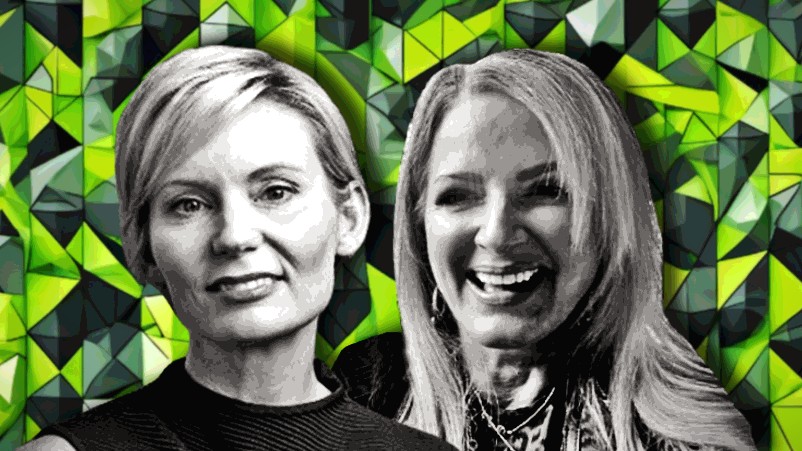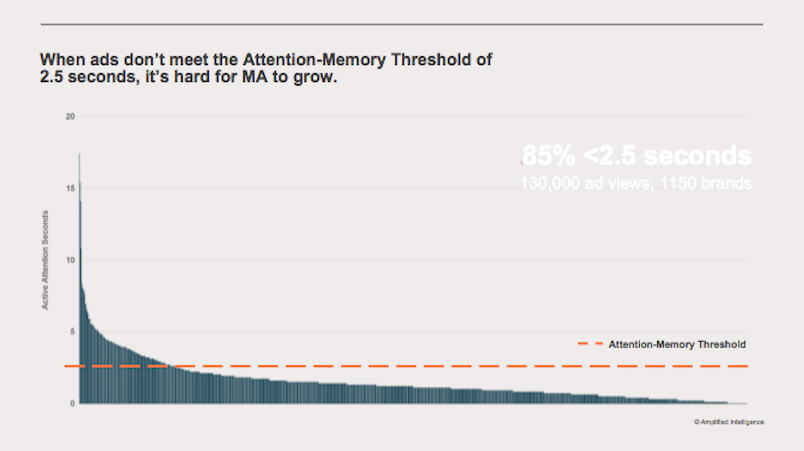Can ‘amazing creative’ crack fleeting attention? NAB’s Michelle Martinis and Amplified Intelligence’s Karen Nelson-Field on stopping the scroll on performance media

Distinctive creative is key for marketers looking to cut through the digital noise, but with “most people not looking at the ads in the first place”, per Amplified Intelligence’s Dr Karen Nelson-Field, landing your message with consumers keeps getting harder. NAB marketer Michelle Martinis says that those willing to take creative risks will be rewarded, but that getting the boardroom to sign off requires some rigour – which so far has been paying off for the bank. Getting it right means understanding how attention plays out between platforms, and adjusting brand and creative accordingly, but with 85 per cent of ads copping less than 2.5 seconds of attention – and many much less, if any – that’s easier said than done. And if the brand doesn't immediately land, there's a risk of accidentally funding competitors' growth.
What you need to know:
- The fickle attention of audiences on digital platforms has made achieving cut-through a hard task – 85 per cent of ads in digital platforms get less than 2.5 seconds of attention, and many much less than that, according to Amplified Intelligence.
- Founder and CEO of the media attention firm, Dr Karen Nelson-Field, says ‘amazing creative’ is essential to effective advertising, but that its impact is tempered by the attention deficit: She has previously stated that "about 70 per cent of the ads you buy using MRC accredited metrics [viewability] get zero attention from humans".
- Moreover, if brand isn’t established within the fleeting attention window, it’s likely to be misattributed to category leaders. So it's not only a waste of money, but brands risk actively strengthening their competitors' hands on their own dime.
- With two decades in financial services marketing under her belt, NAB head of homeowner and personal bank marketing, Michelle Martinis, says that being distinctive in this context means taking risks – but those risks must be proven through data if you’re to get the boardroom on side.
- The pair spoke on stage for a panel at last week’s Spotify Sparks in Sydney.
Distinctive creative is the key to cutting through in the oversaturated, high-scroll performance environment, but can a brand be distinctive within the 2.5 seconds of attention its ad might receive?
That’s the issue that Amplified Intelligence’s Dr Karen Nelson-Field and NAB’s head of homeowner and personal bank marketing at NAB, Michelle Martinis tried to crack in a discussion for Spotify Sparks last Thursday.
Speaking on stage for the audio streaming giants inaugural upfront style affair, the pair swapped notes on how brands can “stop the scroll” that has in the digital age made consumer’s attention so fickle. But 2.5 seconds - the amount of attention only 15 per cent of digital ads will receive according to an Amplified Intelligence study from a few years back – is not much to work with. Great creative, the pair explained, is a start, but its not in itself a solution – because 85 per cent of ads won't even notch 2.5 seconds. (Nelson-Field has previously said that "about 70 per cent of the ads you buy using MRC accredited metrics [viewability] get zero attention from humans".)

Scroll disruption
“The creative and its ability to cut through is tempered by both by the user experience and purpose of the digital ecosystem,” said Nelson-Field. “People think they value amazing creative, and [they] will stop and watch, it but the reality is you are trained to scroll.”
The attention expert, who’s been working with Spotify on some imminent attention research around the audio streamer’s new video feature, said that “unexpected” creative is what’s most likely to capture audience attention in that fleeting window of attention.
For Martinis, a stalwart of financial services marketing with two decades between NAB, Suncorp and ANZ, taking measured risk is the best bet for achieving cut through.
“I'm sure you'd rather stick pins in your mind than think about financial services products every day,” she quipped. “So it’s my role to make it interesting and distinctive.”
That, she said, “takes a lot of boardroom convincing”. Her approach is to make top management comfortable that it’s okay that “some might not like it, but at least they'll stop and look”.
Advocating for distinction requires bravery from the part of the marketer – and it’s particularly acute in “economic moments like these” where “every single dollar you spend needs to return a significant amount for it to be justified”, Martinis added.
“We are ridden every single day to make sure that those dollars are performing and we’re seeing the lift in sales that you’re expecting."
But she acknowledged that it's a fine line between being “as different as you can be” and making management “too nervous”.
“You can put some nice tight little boundaries around how you take those risks when you're deciding to be slightly different and revamp the status quo.”
Attention crisis
But just how impactful can even the most distinctive of creative be when, per Nelson-Field “most people are not looking at the ads” in the first place.
The answer is not black and white but a matrix of channel, creative and brand salience – the latter of which Nelson-Field says is too often overlooked.
“When the brand is missing, we fill in the blanks,” she explains. “Typically speaking, if you don't get enough attention, and you're not the biggest brand in the category, what's going to happen is they're going to misattribute it to your bigger competitor.”
Karen-Nelson describes the relationship between media and creative as synergistic. She says marketers need to understand how user experience on different platforms might impact attention and must adjust the creative accordingly.
“I often say to people ‘I know where I can get you 10 seconds of attention’, but if your creative doesn’t have a message that makes sense or the branding is not apparent, then I can’t help.”
Test and measure
Getting the balance right, for Martinis, comes down to constant measurement and optimisation.
“I work in financial services, everything we do is measured, I think every breath I take and every step I take is measured for that matter,” she laughed. “I think that’s a good thing, because what gets measured gets done.”
“I can lay out exactly how we're going to measure attention – and we will provide in flight as much as we can – and a whole series of other metrics that matter. Because the wonderful thing about working in large organisations is having access to research and measurement budgets.
“You can do all sorts of wonderful things, like multivariate regression analysis to determine which metrics actually matter when it comes to where the econometric is, the monthly application… or whatever it might be.”
NAB’s head of group brand, Sue Brailsford, spoke to Mi3 in March about the bank’s latest iteration of its ‘More than Money’ brand platform, now in market for an eighth year running after a successful run in 2022 which saw a 20 percent improvement in media performance per NAB’s multivariate regression modelling.
The distinct positioning that ‘More than Money’ creates for NAB, Brailsford told Mi3, was key to its success.
“It’s a reflection on who we are, how we want to show up in supporting our customers through what’s happening in their lives and businesses and where we are going with our brand and business strategy.”
It’s also proven to be flexible over its eight-year run – and connecting with context has been a big part of that.
Per Martinis, one of the more recent pieces of research that she commissioned for NAB used biometric data to prove the value of context to make advertising “visible and relevant and timely” for consumers and “stop the scroll”.
“In tough economic times, the preference is to do what works, just keep doing what you're doing,” she said. “But my desire was to unlock the power of context, both in the media and creative, and it was difficult to prove that.”
Nevertheless, she managed to crack it: NAB tested contextually activated creative against non-contextually activated creative to prove Martinis’ hypothesis and optimised the work to “take NAB to number one in consideration in the category multiple times”, she said, “well above our market share and our natural spot at number three.”



